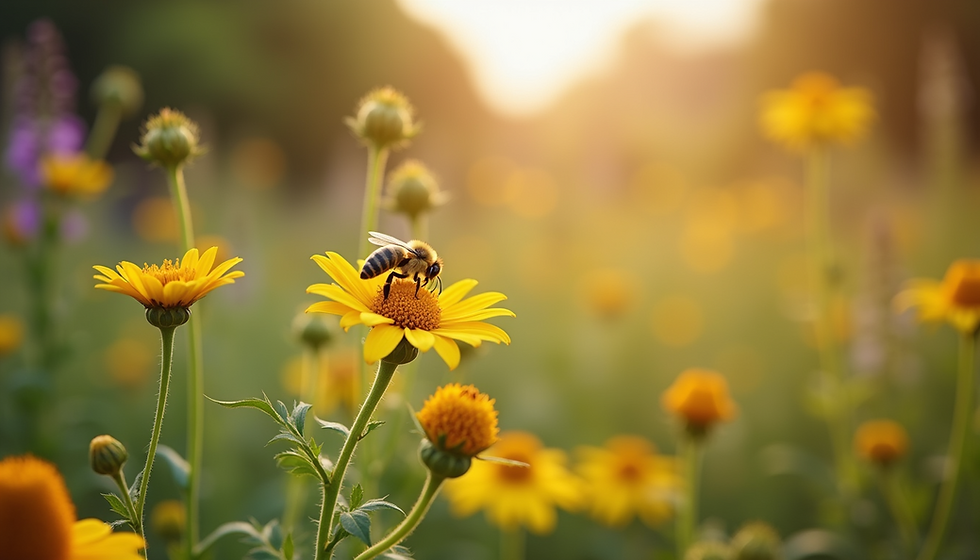Efficient Living with Passive Design
- Isis

- Oct 22
- 4 min read
Updated: Nov 3
There is a quiet magic in the way a home breathes with the earth, how it listens to the sun’s gentle arc and the whisper of the wind. Imagine a place where warmth and coolness are not summoned by machines but invited by nature itself. This is the essence of living efficiently, where every corner of your home is a partner in harmony with the environment. Today, I want to share with you the beauty and wisdom of sustainable home design, a journey that feels like a soft dance with the seasons and a deep conversation with the land beneath our feet.
Embracing Sustainable Home Design: A Path to Harmony
Sustainable home design is more than just a trend; it is a commitment to nurturing the earth while creating spaces that nurture us in return. It’s about weaving together materials, light, air, and space in ways that reduce waste and energy use, while enhancing comfort and wellbeing. When we choose sustainable design, we choose to live gently on this planet, to tread lightly and thoughtfully.
One of the most profound gifts of sustainable design is its ability to connect us with nature’s rhythms. Think of a home that captures the morning sun to warm its walls, or one that invites cooling breezes through open windows in the heat of summer. These are not just practical choices; they are acts of reverence for the natural world.
Practical steps to embrace sustainable home design include:
Orientation: Position your home to maximise natural light and heat from the sun.
Materials: Use locally sourced, renewable, or recycled materials that have a low environmental impact.
Insulation: Invest in high-quality insulation to keep your home warm in winter and cool in summer.
Water Management: Incorporate rainwater harvesting and greywater recycling systems.
Energy Efficiency: Choose energy-efficient appliances and lighting to reduce electricity consumption.
Each of these choices is a thread in the tapestry of a home that lives in balance with its surroundings.

The Heartbeat of Sustainable Living: Nature-Inspired Design
When we think about sustainable home design, it’s impossible not to feel the pulse of nature guiding us. The way trees shade a garden, how earth shelters roots, or how water flows gently downhill – these natural patterns inspire us to create homes that are not just structures but living, breathing ecosystems.
Imagine windows placed to catch the soft morning light, walls built thick to hold warmth like a cozy embrace, and gardens that bloom with native plants, inviting birds and bees to visit. This is the poetry of sustainable living, where every element sings in tune with the environment.
Incorporating native plants around your home is a simple yet powerful way to enhance sustainability. These plants require less water, support local wildlife, and reduce the need for chemical fertilisers and pesticides. Plus, they bring a unique beauty that reflects the spirit of the land.
Here are some ways to bring nature’s wisdom into your home:
Natural Ventilation: Design windows and vents to encourage airflow, reducing the need for air conditioning.
Thermal Mass: Use materials like stone or concrete that absorb heat during the day and release it at night.
Green Roofs and Walls: These not only insulate but also provide habitats for wildlife.
Rain Gardens: Capture and filter rainwater naturally, reducing runoff and supporting plant life.
Each choice is a step closer to a home that breathes with the earth, a sanctuary where we can feel truly connected.

What are passive techniques?
Passive techniques are the gentle art of designing homes that work with nature rather than against it. They rely on the natural movement of air, the sun’s warmth, and the earth’s coolness to create comfortable living spaces without heavy reliance on mechanical systems.
These techniques are the backbone of energy-efficient homes, reducing the need for heating, cooling, and artificial lighting. They are simple, elegant solutions that have been used for centuries, rediscovered and refined for modern living.
Some common passive techniques include:
Orientation and Layout: Positioning the home to maximise solar gain in winter and minimise it in summer.
Window Placement and Glazing: Using windows strategically to capture light and heat, while preventing unwanted heat loss.
Thermal Mass: Incorporating materials that absorb and store heat during the day and release it slowly at night.
Insulation and Air Sealing: Keeping the warmth in and the cold out, or vice versa, with effective barriers.
Natural Ventilation: Designing openings to allow cool breezes to flow through and carry away heat.
By embracing these techniques, we create homes that feel alive with the seasons, homes that breathe and shift with the natural world.

Bringing Passive Design into Your Life
If you’re wondering how to begin weaving these ideas into your own home, start small and dream big. Even minor adjustments can ripple out into significant savings and comfort.
Start with Windows: Consider adding shading devices like awnings or pergolas to control sunlight.
Add Insulation: Check your home’s insulation and upgrade where needed to keep temperatures steady.
Plant Trees: Deciduous trees on the north side (in the southern hemisphere) provide shade in summer and let light through in winter.
Use Reflective Surfaces: Light-coloured roofs and walls can reduce heat absorption.
Harvest Rainwater: Set up simple rainwater tanks to water your garden sustainably.
And if you’re building new, explore the possibilities of passive design to create a home that is a true partner in efficient living.
Remember, this is a journey of discovery and care. Each step you take is a gift to the earth and to yourself.
A Future Rooted in Care and Connection
As we look ahead, the vision of efficient living through sustainable home design fills me with hope. It is a future where homes are not just shelters but sanctuaries - places that nurture us and the world around us. Where every beam, every window, every garden bed is a testament to our commitment to live gently and wisely.
Let us embrace this path with open hearts and curious minds. Let us build homes that sing with the wind, dance with the sun, and rest peacefully in the earth’s embrace. Together, we can create a world where sustainability is not a challenge but a celebration - a daily act of love for the planet we call home.
So, what small change will you make today to bring this vision closer? The earth is waiting, and so is your home.
Let’s live efficiently, beautifully, and sustainably - hand in hand with nature.
Happy flowing💦💕







Comments